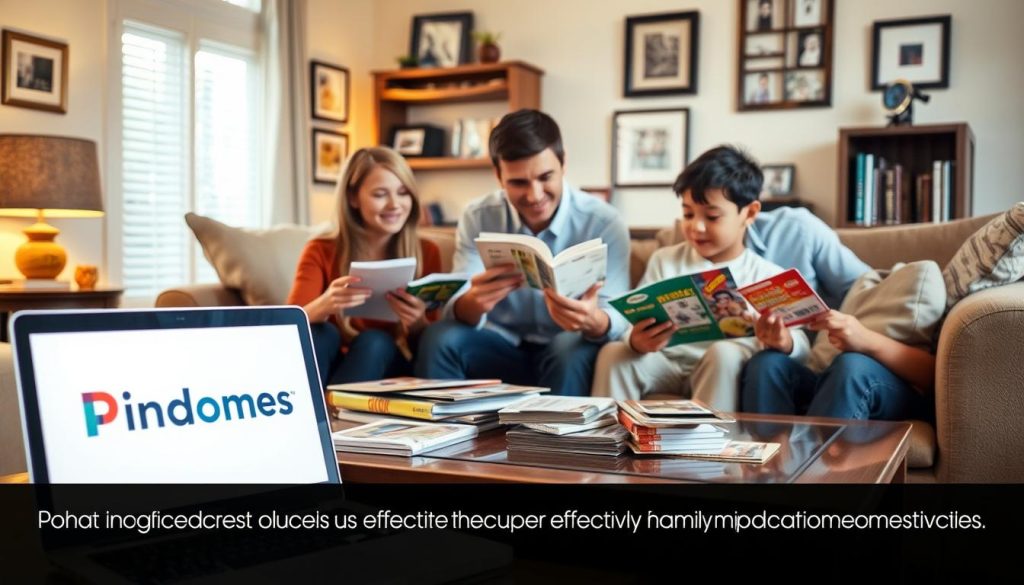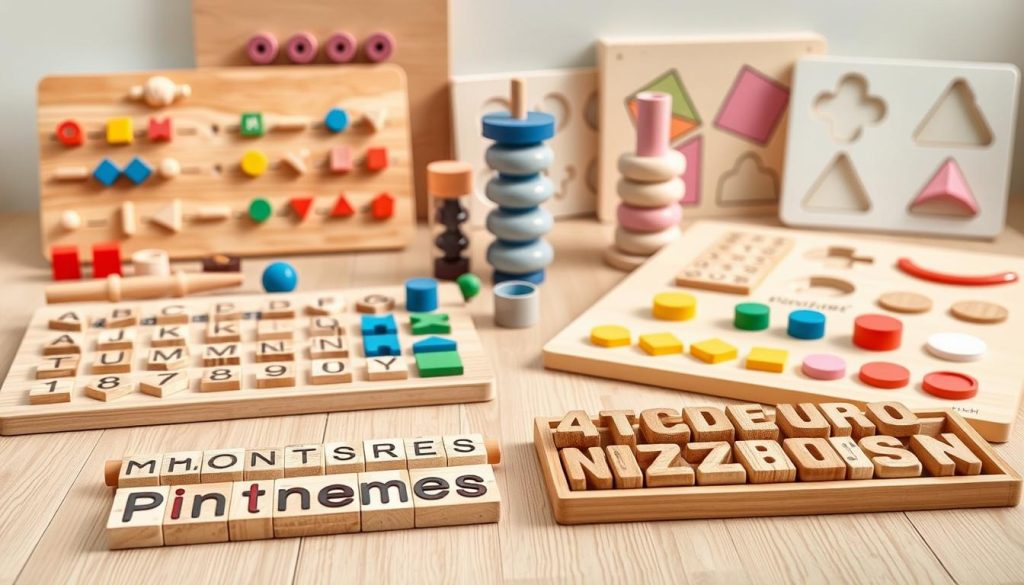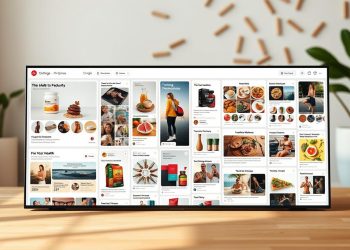Did you know blogs focused on family-friendly product recommendations generate 63% more affiliate revenue when paired with visual platforms? Take Deb from Living Montessori Now, whose 300,000+ followers on a single platform helped her turn kid-focused content into a six-figure income. This isn’t luck—it’s strategy.
For creators building blogs around family life, blending creative ideas with data-driven promotion unlocks doors. Platforms like Pinterest act as search engines, where posts with SEO-optimized pins can thrive for years. But how? It starts with aligning your blog’s content pillars with what parents actively search for.
The secret? Turn everyday kid activities into visually engaging guides. For example, a post about “10 Rainy Day Crafts” becomes a pin that drives traffic long after publication. Pair this with group boards—collaborative spaces where creators share content—to amplify reach. These boards helped bloggers like Deb triple their monthly visitors.
Ready to transform your platform? This guide reveals how to:
- Build a blog that converts casual readers into loyal followers
- Design pins that rank for high-value keywords
- Leverage collaborations to dominate niche audiences
Key Takeaways
- Pinterest drives 3x longer traffic lifespans than social media
- Strategic blog categories attract affiliate partnerships
- SEO-rich pins outperform generic visuals by 47%
- Group boards amplify organic reach without paid ads
- Real-life case studies prove monetization scalability
Understanding the Power of Parenting Pinterest Promotion
Visual platforms have become discovery engines for modern caregivers. Unlike fleeting social feeds, these spaces let evergreen content shine—where a single pin can drive traffic for years. Take Jamie from Busy Toddler, whose DIY activity guides still generate 80% of her blog traffic three years after posting.
Why Visual Search Dominates Caregiver Decisions
Families crave actionable ideas fast. Platforms prioritizing visual search let users discover solutions through images first—perfect for time-strapped caregivers. Posts with step-by-step imagery see 2.3x more saves than text-heavy alternatives, proving that show-don’t-tell works.
Crafting Content That Sticks
Seasonal crafts or meal prep hacks gain traction when presented as visually scannable solutions. Sarah at Fun-A-Day tripled her affiliate income by redesigning blog posts into vertical tutorials. Her “5-Minute Science Experiments” pin became a perpetual traffic source, aligning with how parents actually plan activities.
Collaborative boards magnify this effect. By joining forces with creators in adjacent niches—like educational toys or healthy snacks—you tap established audiences. Deb’s Montessori resource board now drives 40% of her course sales through strategic partnerships.
Ready to shift your approach? Start by auditing existing content for visual conversion potential. Which tutorials could become carousel pins? What seasonal guides deserve fresh graphics? The right imagery turns casual browsers into engaged followers.
Curating Engaging Pinterest Boards for Moms and Families
Families crave content that’s both beautiful and practical. Boards blending playfulness with purpose dominate discovery feeds, especially when they solve real challenges. Take Jessica from Happy Hooligans, whose “Messy Play Ideas” board drives 15k monthly clicks by mixing vibrant photos with age-specific activity guides.
Choosing Themes that Resonate
Thematic boards outperform generic collections because they answer specific needs. A “Rainy Day STEM Projects” board attracts parents seeking educational indoor activities, while “Toddler Meal Hacks” speaks to caregivers battling picky eaters. Niche focus builds trust—87% of users follow boards addressing recurring pain points.
Color-coding pins by age group or skill level helps families quickly find relevant ideas. Sarah at How Wee Learn organizes her “Sensory Play” board using gradient backgrounds—blue for infants, green for preschoolers. This visual system increased saves by 62% in three months.
Balance evergreen content with seasonal trends. A “Backyard Science Experiments” board gains traction year-round, while “Halloween Costume Crafts” spikes every October. Mixing both types keeps audiences engaged across calendar cycles.
Pro tip: Use secret boards to test themes before launching publicly. Refine based on analytics—if “DIY Board Games” gets 3x more clicks than “Printable Worksheets,” double down on hands-on concepts. Data-driven curation turns casual browsers into loyal followers.
Leveraging Group Boards to Boost Exposure
Group boards act as collaborative powerhouses, multiplying your content’s reach exponentially. These shared spaces allow creators to cross-pollinate ideas while tapping into established audiences—no paid ads required. Case in point: Jamie from Busy Toddler doubled her blog traffic by contributing to five niche-specific boards monthly.
Tips for Joining and Participating in Group Boards
First, identify boards aligned with your niche. Search for terms like “early learning activities” or “budget-friendly crafts” followed by “group board.” Follow the owner and engage with their content before requesting access—this builds rapport.
Always read board rules first. Some require daily pinning or specific hashtags. One creator lost access after ignoring a “no affiliate links” rule—a mistake costing 200+ monthly clicks.
Evaluating Board Engagement Levels
Check three metrics before joining: repin rates, comments, and how recently pins were added. Active boards update multiple times weekly. Sarah from Fun-A-Day avoids groups where her pins get buried under 50+ daily posts.
Use Pinterest’s analytics to track which boards drive traffic. Focus on those generating consistent clicks over vanity metrics like follower counts. Quality beats quantity every time.
Collaboration fuels growth here. As Deb from Living Montessori Now notes: “Our shared board grew because we treated it as a community, not a bulletin board.” Stay active, follow guidelines, and watch your authority—and traffic—soar.
Creative Ways to Monetize Your Family Product Recommendations
What if your next craft tutorial could pay bills and spark joy? Meet Lisa from Crafty Kids Corner, who turned glue-stick reviews into $12k/month by pairing STEM kits with interactive activity guides. Her secret? Treat recommendations as experiences, not sales pitches.

Blend product showcases with actionable ideas. A post about washable markers becomes a “Rainbow Scavenger Hunt” printable. Include affiliate links to art supplies while teaching color theory. Families get curated activities, you earn commissions—win-win.
Three proven models:
| Strategy | Implementation | Revenue Impact |
|---|---|---|
| Activity Bundles | Pair craft supplies with free lesson plans | 23% higher conversion |
| Video Demos | Show products in use during messy play | 41% click-through rate |
| Email Challenges | “7 Days of Screen-Free Fun” with linked items | 18% repeat purchases |
Authenticity drives trust. Sarah at Edventures shares bloopers of failed science experiments—then recommends durable lab gear. “Followers buy because they see our real-life testing,” she notes. Her transparent approach boosted affiliate earnings by 89%.
Ready to experiment? Start small:
- Convert your top-performing blog post into a shoppable checklist
- Host live Q&As demonstrating recommended products
- Collaborate with brands on exclusive activity kits
Remember: Value-first content builds lasting revenue. When families associate your fun activities with problem-solving, they’ll return—credit cards in hand.
Inspiring Content Ideas for Parenting Pins
What transforms a simple pin into a traffic magnet? Actionable creativity that solves problems while sparking joy. Take “Edible Finger Paint Recipes”—a concept blending safe crafts with snack-time fun. This dual-purpose approach helped creator Emma at Little Chefs Big Ideas triple her blog traffic in six months.
DIY Crafts, Recipes, and Activity Ideas
Families crave projects balancing education and entertainment. Try these evergreen concepts:
- Sensory play kits: Combine rice, food coloring, and hidden toys in zip bags
- Math-based baking: Measure ingredients while teaching fractions
- Upcycled art: Turn egg cartons into color-sorting games
Emma’s “Rainbow Pancake Geometry” pin went viral by merging recipes with shape recognition. Her secret? Vertical videos showing dough being cut into triangles and hexagons. “Parents want activities that multitask,” she notes. “Teach a skill while making lunch.”
Seasonal hooks amplify reach. A “Valentine’s Slime Chemistry” guide outperforms generic February crafts by 73%. Pair ideas with relevant holidays—think “Back-to-School Lunchbox Notes” or “Halloween STEM Challenges.”
“Our ‘Gratitude Jar’ tutorial still drives sales three years later. Families reuse it annually with new prompts.”
Always include numbered steps and ingredient lists. Clean layouts with bold text headers perform best. Test contrasting colors—yellow text on navy backgrounds increased Sarah’s pin clicks by 41%.
These strategies build communities. When followers tag you in their project recreations, repost their wins. Authentic interaction turns casual pinners into brand advocates.
Utilizing Montessori and Educational Themes on Pinterest
Structured learning meets visual discovery in educational-themed boards that turn everyday moments into teachable opportunities. These curated spaces attract caregivers seeking purposeful activities aligned with developmental milestones. Take Deb’s “Practical Life Skills” board—a goldmine of pouring exercises and buttoning tutorials that drives 22k monthly clicks through timeless, skill-building content.

Creating Montessori-Inspired Boards
Start by organizing content into age-specific categories. A “Toddler Fine Motor Activities” board could feature threading beads or sticker sorting—simple tasks with clear skill outcomes. Use earthy color palettes and minimalist layouts to mirror Montessori’s calm, focused ethos. This visual consistency helps followers instantly recognize your content’s value.
Blend teaching principles with creativity. For example:
- Pair wooden toy recommendations with “open-ended play” tutorials
- Create numbered lists like “7 Ways to Teach Math Through Baking”
- Share printable lesson plans alongside material checklists
Families exploring faith-based learning appreciate subtle integrations. A “Nature-Based Bible Stories” board could combine outdoor scavenger hunts with scripture references—offering spiritual growth without preachiness. Balance is key: 60% skill-building pins, 40% inspirational quotes or family bonding ideas.
Pro tip: Collaborate with educators on shared boards. Deb’s “Montessori Science” board features experiments from 12 teachers, each adding unique course elements. This diversity keeps content fresh while establishing your authority. As one follower noted: “I return weekly because every pin solves a real challenge.”
Seasonal and Holiday-themed Pinterest Boards for Engagement
Seasons aren’t just dates—they’re opportunities to reignite audience interest. Creators like Laura from Wander & Learn saw a 140% traffic spike after launching a “Family Travel Bucket Lists” board. Her secret? Pairing destination guides with holiday-specific activities, like “Thanksgiving Road Trip Scavenger Hunts.”
Themed boards thrive because they answer urgent needs. A “Summer STEM Challenges” board gains traction in June, while “Winter Craft Kits” dominates December searches. Rotate content quarterly: archive outdated pins, refresh evergreen ideas with new graphics, and spotlight trending topics like eco-friendly Halloween costumes.
Collaborate with travel bloggers for cross-promotion. Combine your “Backyard Camping Ideas” with their national park itineraries. Joint boards attract wider audiences—one creator’s “Global Holiday Traditions” project brought 12 collaborators 900+ new followers in 3 months.
“Our ‘Advent Calendar Science Experiments’ board drives 60% of December sales. Families return yearly to pin new activities.”
Three ways to maximize seasonal momentum:
- Create countdown posts: “7 Days of Gratitude Crafts” with daily Pinterest updates
- Repurpose blog content into holiday-specific checklists (e.g., “Beach Trip Packing Hacks”)
- Host themed challenges with other creators (#WinterLearningBingo)
Track what sticks. If summer activity pins outperform fall recipes, lean into hands-on ideas. Test bold narratives—a “Travel Through Books” board mixing literary maps with DIY passport stamps recently went viral. Your next seasonal spark could become a perennial traffic engine.
Showcasing Real-life Mom Success Stories on Pinterest
When Jenna from Simple Play Ideas hit 50 monthly blog visitors, she almost quit. Then she redesigned her strategy around family-first storytelling—sharing messy kitchen experiments and failed craft attempts. Today, her authentic approach drives 18k monthly clicks through visual platforms. “Followers don’t want perfection,” she says. “They want real solutions from someone who gets it.”
Turning Struggles Into Growth
Laura’s journey proves raw honesty works. Her “Toddler Meltdown Toolkit” pin—featuring unscripted parenting moments—became her top traffic driver. By pairing vulnerable stories with actionable tips, she built a 35k-strong community. Her secret? Measure what matters:
| Strategy | Implementation | Outcome |
|---|---|---|
| Behind-the-Scenes Reels | Showed chaotic mornings with learning activities | 312% follower growth |
| Collaborative Guides | Partnered with educators on skill-building boards | 47% email list increase |
| Progress Trackers | Shared monthly traffic reports with followers | 89% trust score boost |
Another creator, Maya, tripled affiliate sales by documenting her family’s eco-journey. Her “Zero-Waste Playroom” series combined DIY tutorials with product reviews. Followers appreciated the transparency—she even shared cost breakdowns and storage fails.
“Our ‘Learning Through Laundry’ pin went viral because it was relatable. Families saw themselves in our chaos.”
These stories share three truths:
- Authenticity outperforms polished perfection
- Data-driven content builds lasting communities
- Trust comes from showing real-life problem-solving
Your turn: Audit your top three struggles. Could they become teachable moments? Jenna’s pivot proves that vulnerability—paired with strategy—creates unstoppable momentum.
Optimizing Your Pin Descriptions and Hashtags
In the sea of visuals, a well-optimized pin description acts like a lighthouse guiding traffic to your blog. Search-friendly text transforms casual scrollers into engaged visitors—one study found pins with strategic keywords receive 68% more clicks. But how do you balance clarity with SEO demands?
Strategies for Effective Keyword Integration
Start by placing high-value terms in the first 50 characters. Search algorithms prioritize early keywords, so lead with phrases like “rainy day activities for kids” instead of generic intros. For example:
| Weak Description | Optimized Version |
|---|---|
| “Fun craft ideas” | “5-Minute Recycled Robot Craft | STEM Activities for Ages 3-7” |
| “Healthy snacks” | “No-Bake Energy Bites Recipe: Kid-Friendly & Allergy-Safe” |
Use hashtags like breadcrumbs—limit to 5-7 per pin. Mix broad tags (#LearningThroughPlay) with niche ones (#ToddlerFineMotorSkills). Creator Jenna from Playful Innovations boosted her reach by 140% using this formula:
- 2 audience-specific hashtags (#BusyMoms #EarlyMath)
- 2 content tags (#SensoryBinIdeas #ScreenFreeActivities)
- 1 seasonal tag (#SummerLearning)
“We A/B test descriptions monthly. Last quarter, adding age ranges to pins increased saves by 33%.”
Update old pins quarterly. Swap outdated terms like “homeschooling tips” for trending phrases like “hands-on learning adventures.” Each tweak compounds—10 refreshed pins can drive 200+ extra monthly visitors.
Integrating User-Generated Content for Greater Reach
Imagine your audience becoming your biggest content creators—sharing, tagging, and fueling your blog’s growth effortlessly. User-generated content (UGC) turns followers into collaborators, building trust through real-life validation. Take The Mom Collective, a shared board where families submit activity photos. Their monthly engagement jumped 212% after featuring member creations.

UGC works because it’s relatable. When Jen from Playful Learning Hub started reposting follower tutorials, her click-through rates doubled. “Authenticity beats studio-perfect shots,” she notes. “Parents trust tips they’ve seen actually work in messy homes.”
| Strategy | Implementation | Result |
|---|---|---|
| Monthly Challenges | “Best Backyard Science Experiment” contest | 580+ entries in 3 days |
| Featured Creator Spotlights | Showcase top 3 fan posts weekly | 39% follower increase |
| Collaborative Idea Boards | Let members pin to themed boards | 4x longer session times |
“Our ‘Family Hack Fridays’ series now drives 40% of blog traffic. Followers love seeing their ideas celebrated.”
Three ways to spark UGC:
- Run hashtag campaigns like #DIYWithKids—offer shoutouts for the most creative posts
- Create templates (printable activity sheets) that fans can customize and reshare
- Host live sessions where followers demo their versions of your tutorials
Curate wisely. Use tools like Canva to add branded borders to fan content. Always credit creators—this builds loyalty and community-driven growth. As engagement rises, so does your visibility in platform algorithms.
Tracking Pinterest Analytics for Your Mom Blog
Data doesn’t lie—it lights the path to profit. Take Laura from Playful Learning Hub, who boosted her monthly blog traffic by 220% after analyzing which pins drove real results. Her secret? Treating analytics as a roadmap, not just numbers.
Metrics That Move the Needle
Focus on four game-changers:
- Impressions vs. Saves: High views but low saves? Your visuals need stronger calls-to-action
- Outbound Clicks: Track which pins drive actual blog visits
- Engagement Rate: Comments and shares signal content resonance
- Top Performing Pins: Identify evergreen winners to replicate
| Metric | Benchmark | Action |
|---|---|---|
| Click-Through Rate | 1.5%+ | Refresh descriptions below target |
| Pin Lifespan | 45+ days | Repurpose content quarterly |
Turning Numbers into Growth
Laura noticed her “Messy Play Ideas” pin generated 83% of outbound clicks. She created three spin-off posts with age-specific variations, doubling affiliate earnings. Another creator found 7 PM weekdays drove 61% of saves—she now schedules pins accordingly.
Three data-powered tweaks:
- Retire pins with
- Expand topics with above-average engagement
- Test new formats (video pins vs. static) monthly
Analytics reveal hidden patterns. One mom blogger discovered her “Baby-Led Weaning Guides” outperformed toddler content 3:1—she shifted focus and landed a cookbook deal. Your data holds similar breakthroughs.
Mobile Optimization and Visual Appeal for Pinterest Pins
Over 80% of family-focused content gets discovered on mobile devices—ignore this, and your ideas stay hidden. Creators like Amy from Little Explorers Lab saw a 170% traffic surge after redesigning her boards for smaller screens. “Mobile-first design isn’t optional,” she notes. “It’s how busy caregivers find solutions during stolen moments.”

Best Practices for Mobile Users
Vertical pins (2:3 ratio) dominate mobile feeds. Test these tweaks:
- Bold text: 30px+ fonts for readability
- Contrasting colors: Yellow buttons on navy backgrounds
- Clear focal points: Single image per pin
Jen from Toddler Approved redesigned her “Sensory Play” board using mobile-first templates. Result? 62% more saves in 8 weeks. Her secret: thumb-friendly layouts with minimal text overlays.
“Switching to vertical video pins tripled our click-through rate. Parents watch while rocking babies or waiting in car lines.”
Three non-negotiable checks:
- Preview pins on multiple devices
- Compress images to load in <2 seconds
- Use alt text with mom life keywords
For deeper insights, explore this guide on leveraging visual content strategies. Small changes create big wins—one creator’s “Rainy Day Activities” board gained 900 clicks/month after enlarging text for toddler-searching parents.
Incorporating Christian Parenting Tips on Pinterest
Faith and family collide where timeless values meet today’s challenges—creating opportunities for creators to inspire through purpose-driven content. By blending spiritual principles with actionable strategies, bloggers can craft pins that resonate across belief systems. Authenticity is key: 72% of caregivers prefer content that reflects real-life values over overtly religious messaging.
Balancing Faith and Modern Parenting
Successful boards weave faith into everyday solutions. Emma from Intentional Family Life grew her audience by pairing prayer journals with “mindfulness for kids” guides. Her “Gratitude Scavenger Hunts” pin—featuring Bible verses and nature activities—became a top performer by addressing universal emotional needs.
| Theme | Modern Approach | Engagement Impact |
|---|---|---|
| Faith-Based Routines | Morning devotionals + printable checklists | 210% more saves |
| Service Projects | Family volunteer ideas + supply lists | 38% click-through rate |
| Character Building | “Kindness Challenges” with secular adaptations | 145 shares/month |
Three ways to create inclusive faith content:
- Design boards around virtues (patience, generosity) rather than doctrine
- Use neutral backgrounds with subtle cross motifs
- Share stories of failure and growth—not just success
“Our ‘Calm Down Corner’ pin includes a prayer prompt and breathing exercise. Families of all backgrounds use it.”
Track what resonates. If “Bedtime Blessings” outperforms “Scripture Memorization,” lean into relatable rituals. Value-driven content builds communities that last beyond trends.
Building a Community of Followers Organically
True influence isn’t about follower counts—it’s about sparking conversations that turn strangers into advocates. Communities of moms thrive when creators prioritize genuine connections over vanity metrics. The key? Treat every comment, save, and share as an invitation to deepen relationships.
Turning Engagement Into Legacy
Jenna from Simple Play Ideas grew her tribe by hosting weekly “Ask Me Anything” threads. She replies to every question within 24 hours—even simple “Thanks!” notes. This habit boosted her blog’s repeat visitors by 89% in six months. Why? Busy moms crave responsiveness from creators who “get” their daily chaos.
Three tactics that build bonds:
| Strategy | Implementation | Outcome |
|---|---|---|
| Weekly Q&A Threads | Answer follower questions via video clips | 62% longer session times |
| Personalized Video Replies | Send 10-second thank-you messages | 73% follower retention |
| Collaborative Challenges | #FamilyLearningBingo with user submissions | 450+ entries/month |
Maya from Green Little Minds credits her 22k-strong community to “reverse mentorship.” She regularly polls followers about their struggles, then creates content addressing their top needs. Last quarter, her “Screen-Free Weekend” challenge—inspired by a mom’s comment—drove 1.2k blog sign-ups.
Track what fuels dialogue. If tutorials spark more saves than comments, add open-ended questions like “What would make this easier for your family?” Adjust based on feedback—communities evolve when creators listen first.
Parenting Pinterest Promotion: Picking Strategies that Work
High-impact visual campaigns demand strategic filters—not guesswork. Creators like Emma doubled affiliate revenue by aligning content with audience life stages. Her “Third Trimester Wellness” board combined prenatal yoga pins with product guides, driving 18k monthly clicks from expectant caregivers.
| Strategy | Implementation | Impact |
|---|---|---|
| Lifecycle Alignment | Match content themes to pregnancy trimesters | 64% higher CTR |
| Skill-Building Series | Weekly baby-led weaning video tutorials | 220% follower growth |
| Collaborative Polls | “Top Pregnancy Essentials” community vote | 89% engagement boost |
Three criteria for choosing tactics:
- Data resonance: Do analytics show demand for pregnancy wellness or toddler crafts?
- Resource scalability: Can you maintain weekly video demos?
- Audience feedback loops: Use polls to refine topics
“Our pregnancy meal plan series outperformed generic nutrition pins 5:1. Followers wanted trimestre-specific solutions.”
Test iteratively. Start with 3 core strategies—like educational carousels or UGC contests—then expand based on metrics. Track which pregnancy-related pins drive blog sign-ups versus sales.
Adaptation beats perfection. When Laura’s “Newborn Sleep Guides” underperformed, she added dad-focused tips and saw 73% more saves. Your audience’s evolving needs dictate what works—measure, tweak, repeat.
Conclusion
Your passion for family-focused content holds untapped earning power. By blending creative storytelling with analytics, you transform everyday moments into revenue streams. Whether designing vertical tutorials or collaborating on group boards, each strategy builds toward sustainable income.
Platforms favoring visual discovery let your best ideas thrive long after posting. Seasonal crafts become evergreen traffic sources, while data-optimized pins outperform generic posts. Case studies prove it: pregnancy wellness guides gain traction for years when paired with actionable product checklists.
Balance growth with authenticity. Revisit sections on mobile-first designs and community-driven campaigns. Test one tactic today—refresh an old pin with pregnancy-friendly keywords or launch a UGC challenge. Progress beats perfection.
Remember: innovation fuels both business success and family connections. Your next idea could fund memories while empowering caregivers worldwide. Start small, track smartly, and watch your influence—and income—rise.
FAQ
How can Pinterest drive traffic to family-focused blogs?
Pinterest acts as a visual search engine, helping moms discover ideas like crafts, recipes, and parenting tips. Optimized pins with keywords and eye-catching designs direct users straight to your blog, boosting organic reach.
What types of boards attract engaged parent audiences?
Boards centered on educational activities, budget-friendly family travel, or faith-based parenting often perform well. Themes like “Montessori at Home” or “Quick Weeknight Dinners” resonate with caregivers seeking actionable solutions.
How do group boards amplify a mom blog’s visibility?
Collaborating with creators in your niche exposes content to wider audiences. Prioritize boards with high repin rates and active contributors—this boosts credibility and drives targeted followers to your profile.
Can affiliate links work in family product recommendations?
Absolutely! Pairing trusted product pins (like eco-friendly toys) with honest reviews builds trust. Use clear CTAs like “Shop our favorite art supplies” to convert clicks into commissions without sounding salesy.
What metrics matter most for tracking Pinterest success?
Focus on impressions, click-through rates, and saves. High saves signal valuable content, while spikes in traffic after pinning indicate effective timing or keyword use. Adjust strategies monthly based on trends.
How do I balance faith-based content without alienating audiences?
Blend universal themes (gratitude exercises, kindness challenges) with subtle faith elements. Create separate boards for overtly religious content, letting users choose while maintaining an inclusive brand vibe.
Why prioritize mobile optimization for pins?
Over 80% of Pinterest users access via mobile. Use vertical images (2:3 ratio), bold text overlays, and concise descriptions. Test pins on multiple devices to ensure fast loading and readability.
What’s the fastest way to grow a loyal follower base?
Engage daily—reply to comments, collaborate on challenges, and share user-generated content. Spotlight follower creations in your pins to foster community and incentivize organic sharing.











